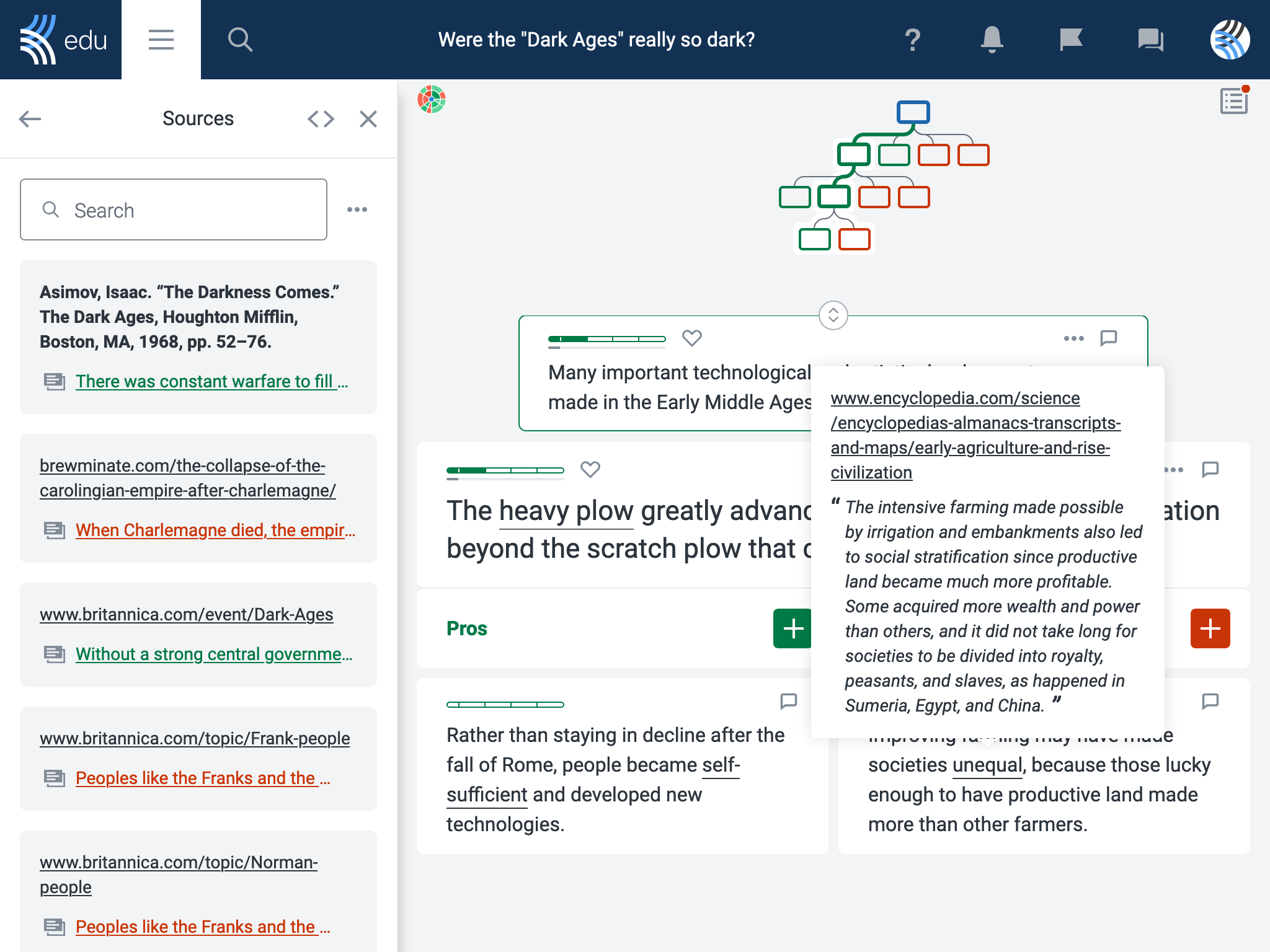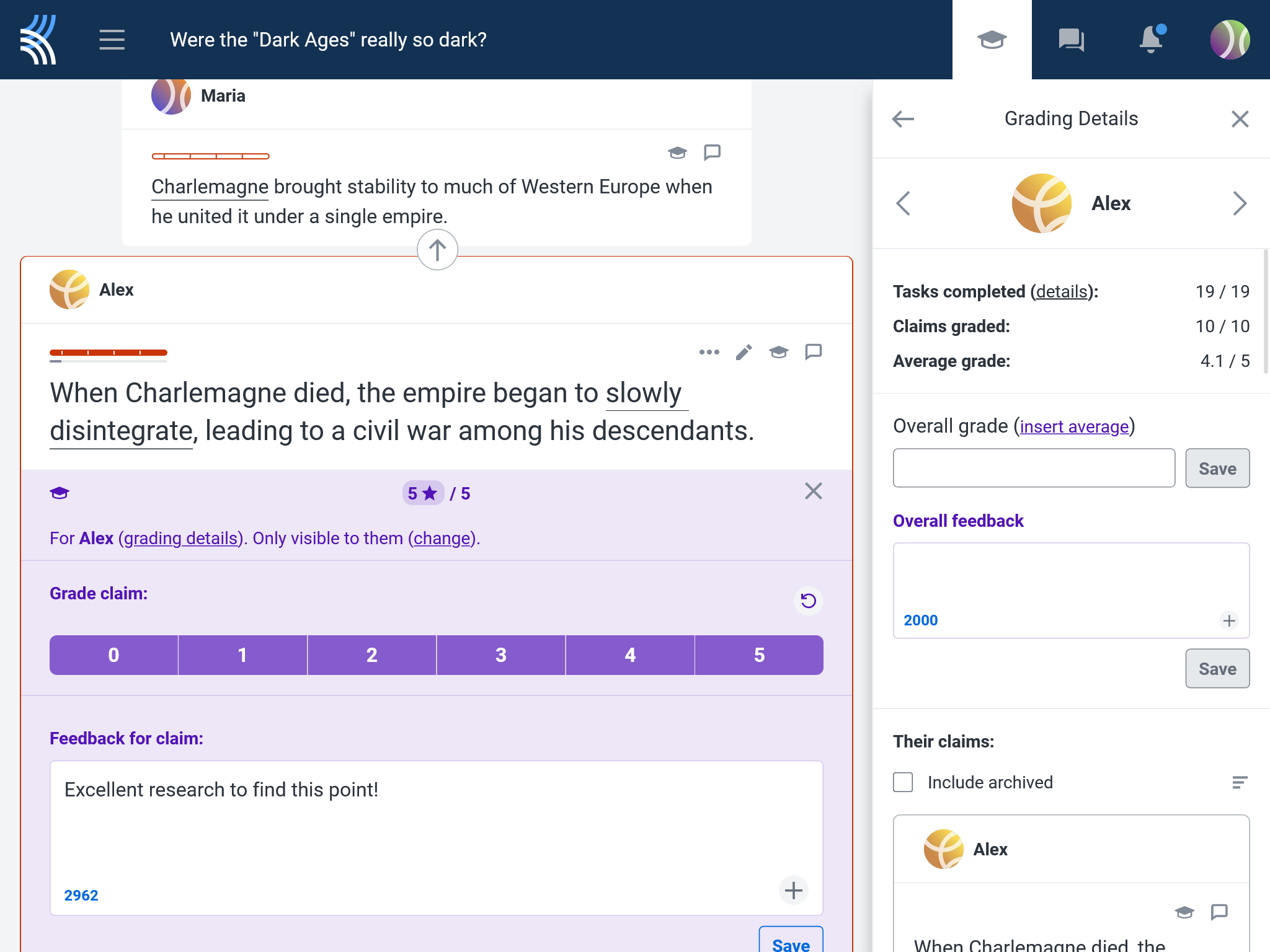Helping students become proficient at recognizing suitable sources and integrating them effectively into their work is a skill that will greatly benefit them throughout their lives.
Working with sources not only exposes students to different perspectives, but it also helps them view information through a more critical lens. Kialo discussions can help students incorporate the use of supporting evidence into their arguments, whether they are younger learners just beginning to recognize sources or older students working on a capstone essay.
How students can cite sources with Kialo’s Sources sidebar
Kialo discussions make it easy to add and keep track of sources. When students add sources (either online or offline) as supporting evidence to their claims, the links are stored in an alphabetical list in the Sources sidebar.

You can quickly review this collated list of sources and offer feedback as needed. Not only that, your students have a system that organizes their references. This is particularly useful if they’re using the discussion to develop their ideas for an essay.

But aside from these features, how else might you practice using sources in your classes with Kialo Edu discussions? Here are a few engaging activities suitable for different age groups.
Engaging activities for using and evaluating sources on Kialo
1. Activities for identifying a need for sources for younger learners
For younger learners, this can be as easy as just starting the conversation about sources. In a Kialo discussion, ask them to identify claims where they feel evidence would be helpful and explain their reasoning.
The first time you do this, adding a couple of fairly outrageous claims can get the ball rolling! Making this a regular activity will help them learn to spot points where information should probably be backed up.
2. Activities for identifying a need for sources for older students
For older students, get them to flex their research muscles by asking them to find sources which support or contradict your argument. If they’re working on cloned discussions in small groups, give students Editor permissions to add relevant sources to your claims. You could even ask them to add a comment with a correct citation in your preferred style!
3. Activity for identifying credible sources for younger learners

With a wealth of information now available at our fingertips, the line between a credible source and a not-so-credible source isn’t always clear. The potential for misinformation, or indeed disinformation, is significant. Thus, students need tools to be able to identify trustworthy and unbiased sources. On Kialo, you can help students evaluate sources by using a checklist like the CRAAP Test.
For younger learners, you can add vetted sources into the Background Information in a discussion to model the type of sources they can trust. Then, ask your students to review your links against a checklist before they start the discussion. This will encourage students to look at who exactly is providing the information and what their motives might be.
4. Activities for identifying credible sources for older students
For students with a bit more experience vetting sources, you can add a wider range of source types into the Background Info. Then get students to build their own checklist to evaluate the sources against. You can provide students with this guide for checking online news sources if they need some inspiration!
Once your students are used to reviewing sources, why not occasionally add in a competitive dimension? Hide one questionable source in a Kialo discussion for them to find. It can be as subtle or blatant as needs be to suit your students’ age and experience.
Or, get students to fact-check the teacher! The low-stakes competitive element will capture their attention, and it has the added bonus of making sure they’re really checking out your supporting information.
Read on for even more Kialo best practices — our tips and tricks will get you the most out of having Kialo discussions in your class!

